CORDOBA
Good Morning Sunshine
Yes, we woke up to sunshine:
finally!!! But it is still quite cool. So we didn’t had breakfast on the patio
but inside. We got a typical Spanish breakfast with fresh pressed orange juice
from the own trees and home-made bread: for breakfast you drizzle olive oil on
the bread, than add tomato and ham: no question the ham is amazing. Even we did
learn that this is the “normal” cheaper ham and not the famous black ham. The
famous black ham you buy the whole leg (and yes we saw those hanging around and
they can be up to 700 Euros). Now we are ready to go.
Parking in Cordoba
It’s only a short drive to
Cordoba: unless you have horses in front of you then it goes in the
one-horsepower speed. That made us miss a turnoff in a circle, but finally we
were where Gine hoped we find a parking and we did. But a guy came and talked our
head off, Paul started arguing with him, that it is free parking, the guy only
spoke Spanish – so to shortcut this Gine gave him a Euro and Paul was a bit
upset that people try to take your money for parking even it’s free parking.
The importance of the medieval
Cordova:
- It’s on the Guadalquivir River and has a roman and a Moorish past and it was once capital of both empires
- When the rest of Europe was in the dark ages: Cordoba was a haven of enlightened thoughts an famous for its religious tolerance, artistic expression and dedication to philosophy and science
- From 756-123 the Islamic Cordova was the medieval European cultural capital. It was only rivalled by Bagdad in wealth and power
- So how did it come to it: in 750 after political rivals slaughtered his family the 20-year old Umayad prince Abd Al-Rahman fled the royal palace of Damaskus west to North Africa and lived among the Berbers in Morocco for 6 years. As an heir to the title of caliph he sailed north and claimed Moorish Spain as his own and exerted his power by de-captivating his enemies and sending their salted heads to the rival caliph in Bagdad: this was the split in the Islamic world.
- In 950 When Cordova was Europes greatest city it had over 100.000 inhabitants and hundreds of mosques: the streets were paved and lit at night with oil lamps, they had running water piped in from the outskirt of the city: it was the golden age: with the religious tolerance the three great monotheistic religions Islam , Judaism and Christianity lived side by side. With the Muslim ruling church spire were not allowed to be taller than a minaret as well as no ringing of church bells. The University teached in Arabic, Hebrew and latin to share their knowledge – by the way Cordoba had 71 libraries
- In 1031 a civil war split Al-Andalus into several kingdoms and Cordoba came under control of the Almoravids: Berbers from North Africa with stricter Islamic rules coming
- On June 29,1236 the Christians conquered the city: and as in the morning the Muslims said their last prayer in the great mosque in the afternoon the Christians set up their parable road altar and celebrated their first mass
Over the Roman Bridge –
Puento Romano
We parked close to it and walked
along the river with great views already over to the famous Mezquita and the
roman bridge: Still cool and not a lot of people we crossed the Roman Bridge
and went under the Triumphal Arch.
- No, it’s not really from the romans: the romans only built the first bridge here
- The tower or “torre de la Calahora” is from the 14th century
- triunfo de San Rafael: got built to give Prince Phillip II a royal welcome (but the king arrived before it was finished) and it is dedicated to Saint Rafael the city patron to protect the people from the plague
Is it a Mosque or is it a Church:
the Mesquita
- This is reason we visit Cordoba to see the mosque which got built 784 AD
- It was once the center of the Western Islam and the cultural capital
- Inside you will find arches painted in white-red sitting on 856 columns: those were re-used from roman temples: the columns reflect the immensity and complexity of Allah’s creation
- Once during prayer-time when the floor was covered in carpets with over 20.000 people at once kneeling and facing the mihrab: rocking forward to touch their heads to the ground saying “Allah, akbar la ilaha illa allah, Mihammed rasul alliah”: Allah is great, there is no God but Allah and Muhammed is his prophet
- In 1236 When King Ferdinand III conquered the city, he turned the mosque into a church: still 70% of the original mosque survived: they removed 16 columns and replaced it with the Cathedral in the middle of the mosque
- As where the mosque is 30 ft high, the cathedral is 130 ft high: to emphasize the triumph of Christianity over Islam
- you can see the difference between catholic and Islamic aesthetics and psychology: horizontal versus vertical, intimate versus powerful, fear-inspiring versus loving, dark versus bright, simple versus elaborate feeling close to God versus feeling small before god: the towering is
- both the mosque and the church face east: to Jerusalem and to Mecca
- by the way it’s huge like 180 m x 130 m
Patio de los Naranjas
with Belltower/Minarett: we entered on one side and stepped into a courtyard
filled with orange trees, on the other end is the Bell tower which we skipped,
we went right away to the vending machine to get our tickets to the mosque:
- this is the big welcoming courtyard and here the Muslims gathered to perform ablution: ritual washing before prayer
- originally most of the arches were open to allow light inside, but were walled up during Christianity as chapels were built inside
- the tower was first a minaret and then got redesigned as a bell tower
Visiting the Mezquita:
Ok let’s say first being inside
the Mezquita is an unbelievable experience – pictures do not show you on how
amazing it is, it is overwhelming to stand and see the columns and arches, they
were everywhere, so what did we all see:
- Visgothic mosaic: once entering we fairly soon we found the glass in the floor where you could look down to this mosaic, before the mosque got built here was a church dedicated to Saint Vincent which got shared by the Christians and the muslims, this lasted until 785 when Abd Al-Rahman bought it, so what we can see today is some roman mosaic floor from this old church – it’s kind of cool
- Lots of Chapels: we started to walk along the outside first and to check out some of the chapels – there are so many, soon you will not able to see them all. After going along the wall we ended up on the South side. At one time we could look up and we could see some real intresting style which is the upper area of the royal chapel: it’s by the way more Arabic style – as it is closed and you can’t go in, and from there went to see the famous:
- Mihrab: ok now this also is amazing, Gine had to read up what a Mihrab actually is (see below), but overall this is super amazing, the colors, all the little mosaic pieces, there are overall three of them with the middle being the largest one.
what is a Mihrab for??
- A mihrab is the “altar” of a mosque and during the prayer time everyone faces the mibrab
- The mihrab always goes towards mecca: not in this case as it south: maybe because you have to go south to Gibraltar before heading over to Mecca??
- A mihrab is a decorated niche (in this case more like a room) with a golden-arch entrance: it is here that the imam or prayer leaders stands and reads scripture and gives sermons: he spoke into the niche and this would amplify his voice so everyone could here it
- It got build in the mid 10th century by Al-Hakam and reflects the wealth of Cordoba: 3000 pounds of shimmering multicolored glass and enamel cubes panel the walls and domes in mosaic designed by Byzanthine craftsmen with flowers and quotes from the iran
- Locking up you see a starry dome with skylight and interlocking lope-shaped arches
Continuing on we came to the:
- Treasury - Tesoro: built to hold the holy communion waver (bread). This is something you likely never seen before plated in solid silver and gold in the 16th century it is gigantic, something like this you won’t see very often. In the next rooms with gold over the doorways and everything is in gold. It is really a treasure chamber.
- The Mosque: so maybe a bit about the mosque itself: you have those amazing columns and arches – and then thinking that all this was built within one year!!! Which is the hypostyle prayer hall.
- The church or Capilla mayor: ok so this is super unique you walk see everywhere the prayer hall and in the middle you are in this gigantic church – you can walk around it (through the mosque) and always can then look up into the huge gigantic ceiling, it got built in 1523. With white and gold, it is very unique and if you look closely you can see even Charles V up there with Mary of course. The huge main altar and on the other side the choir stalls: they look a bit weird so dark with a lot of wood carvings and above them two gigantic organs. The stalls are from 1748, you could spend a lot of time looking as one side shows in the upper area scenes of Mary’s life and the other of Jesus. But very fascinating is the lower row: once you know you can look and you can see 49 martyrs each hold a palm leaf as the symbol of martyrism and then behind it you can see on how they got killed (ok most got beheaded)
- Puerto del Perdon: after we left we came by the main entrance to the courtyard which is super cool, also as we wandered around Cordoba we at one time walked around the whole mosque and even from the outside you can see the cool “put on doors and windows” in that Arabic style of arches. Some were restored and some were looking very old.
It was a super unique blend of
mosque with the Christian church and chapels weaved in between and still you
can see the old amazing mosque on how it once was.
Lots of Tourist shops around
Once we left, we came by a lot
and lot of souvenir shops – ok it’s also a lot of fun to do a bit shopping and
check a bit around, correct? As well watching all the people.
Calle de las flores
In case you wonder: it’s named
like that because it’s a narrow alleyway and there are a lot of flowerpots with
flowers along the wall – we walked back to the end: dead end and back out –
it’s kind of funky that they did it like that (I wonder if it is for the
tourists) – but you seen it all in a few minutes.
The Jewish Quarter and the
Sinagoge
Like many citys the streets are
cobble stone, narrow, and if you share them with the cars in can get super
tight, here you even share them with the police on the horse, the horse
carriages – and lots and lots of tourists. Even better if a car goes one way
another one comes in and has to back out: good luck – that looks like fun, as
you already have only inches on each side.
We walked through some little
patios, through archways, little side streets (and we didn’t get lost, even we
didn’t really knew where we were) and ended up in the jewish quarter where we
visited the Sinagoge instead of Arab with saw now Hebrew written on the walls:
it is only one room, so we were fast but then also the part of the history is
interesting itself:
- Built in 1315 it is the only preserved Sinagoge in Andalusia (after the Jews got expulsed in 1492), and one of the 3 remaining sinagoges left in Spain
- It was afterwards used as a hospital, by the shoemaker brotherhood and in 1884 when they wanted to replace the old roof they discovered the plasterwork on the walls and a year later it was declared a national monument
- It is not very big a little patio, atrium and the small square prayer room
Enjoying the sunshine with a
wedding and a Bentley
Walking back around the Mezquita
and we couldn’t believe on how many people were here, until we discovered a
bride – what?? Yes,there was seriously a wedding, and all the well dressed
people were sitting outside the Mezquita having fun eating along the tourists,
we even saw the wedding car which was an old Bentley and totally was
appreciated by Paul. Sitting down we did a bit of people watching, but didn’t
want to linger to long: you know after a month, the sun is calling!!! Heading
back through throngs of people and over the roman bridge with music and an easy
drive out of the city we were ready for:
An afternoon to relax
Blue sky no cloud, finally
sunshine – finally some relax time!! In the loungers - the wind is blowing a
bit cold, until we moved around the corner, after a morning in the city we are
having the perfect nice relaxing afternoon. Paul was even crazy enough and went
twice in the pool!!!! Really – I mean the water is freaking cold.
We stayed outside until we got
cold. Now we are ready to move on hopefully with a lot more sunshine in the
future.

 Córdoba, Andalusia, Spain and Canary Islands
Córdoba, Andalusia, Spain and Canary Islands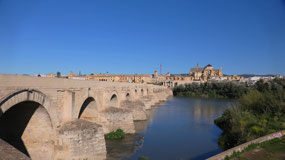
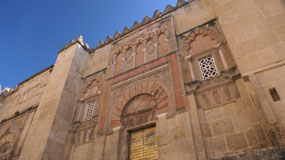
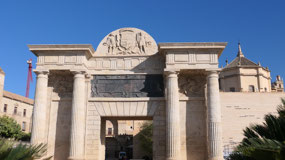
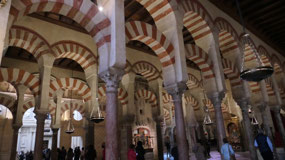
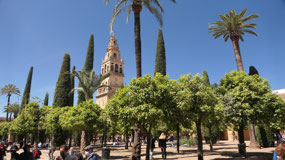
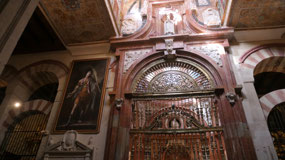
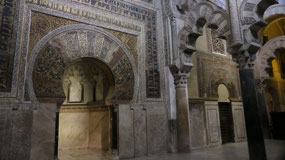
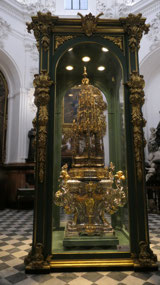
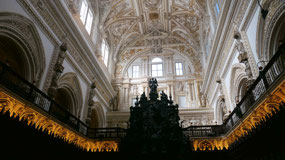
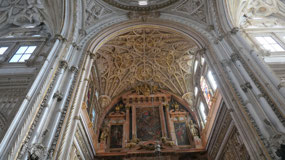
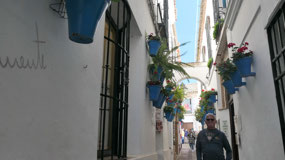
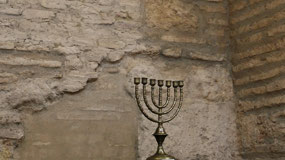
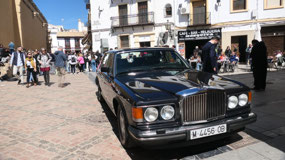
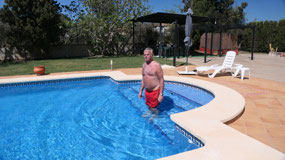




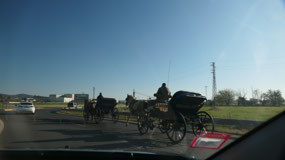
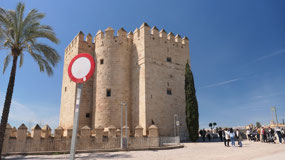
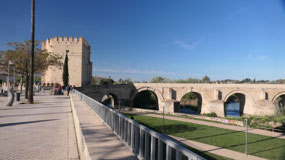
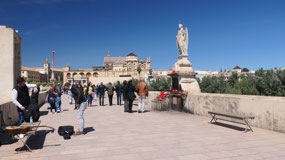
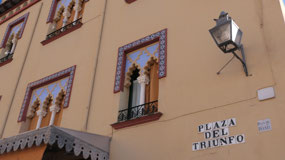
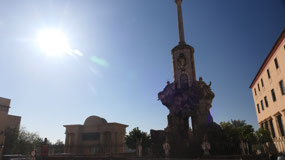
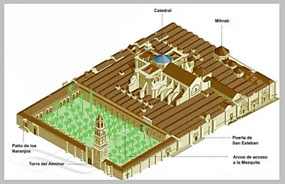
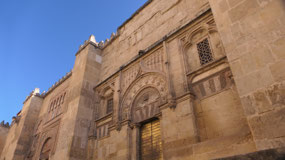
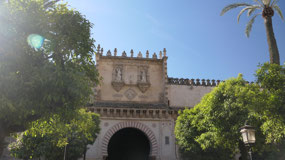
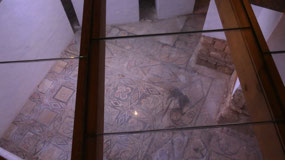
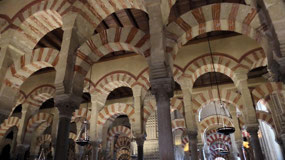
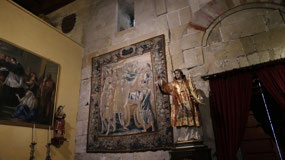

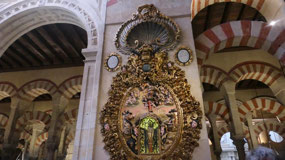

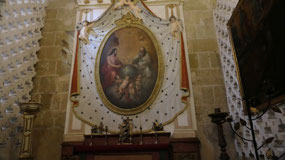


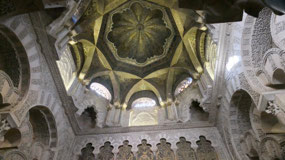
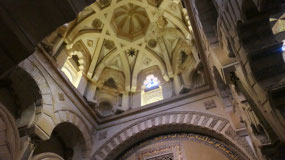
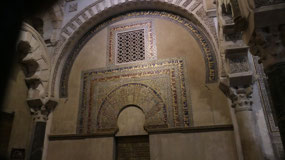
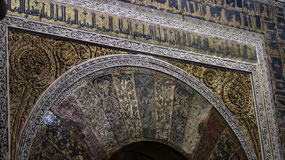
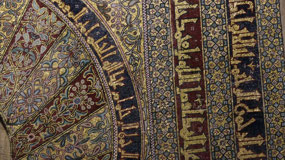
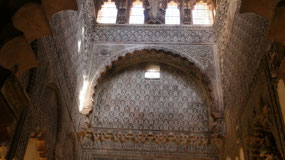
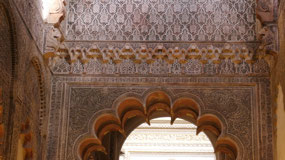
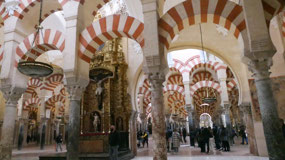

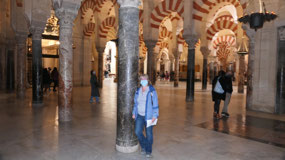
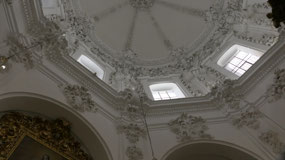
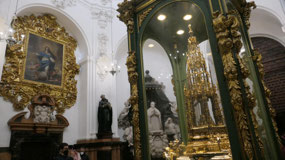
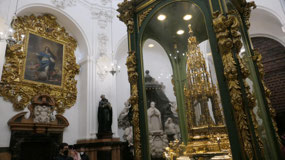
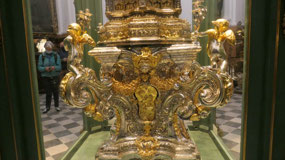
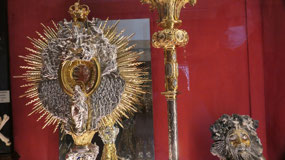
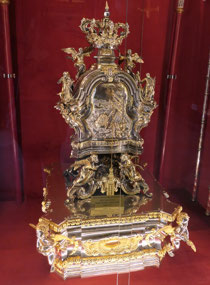
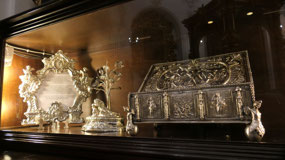
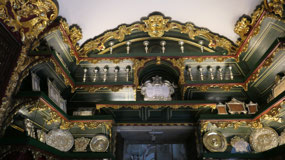


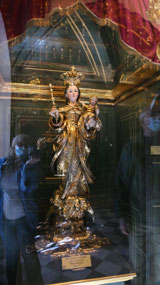
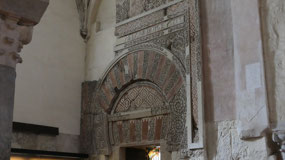
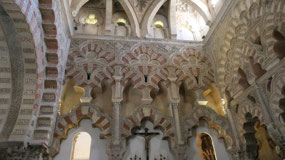
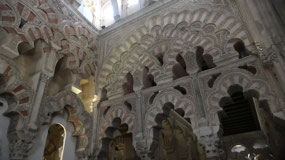
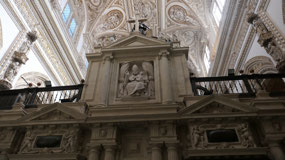
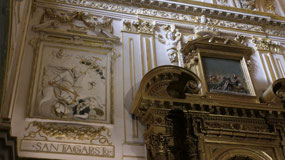
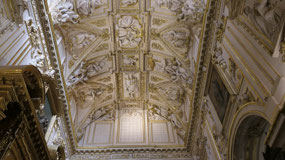
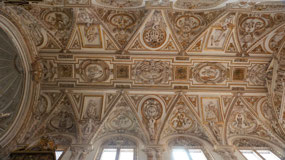
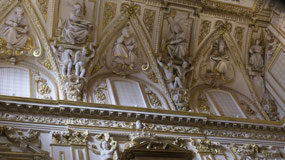
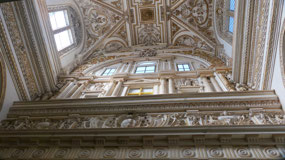
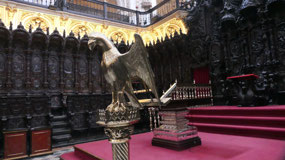
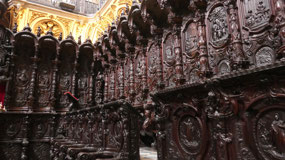
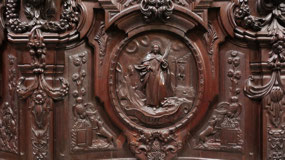
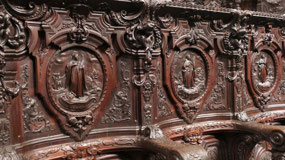
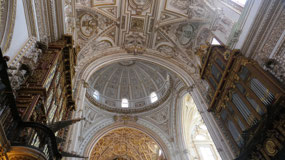
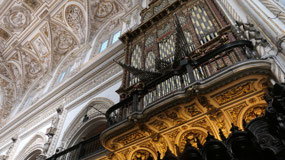
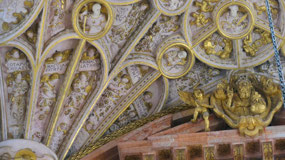
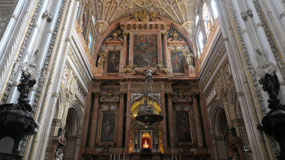
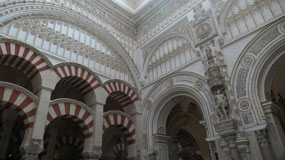
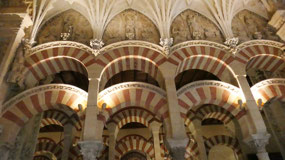
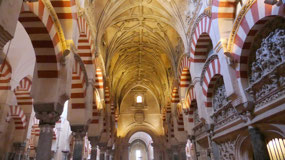
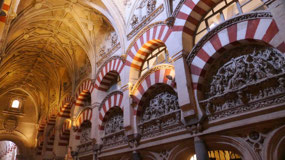
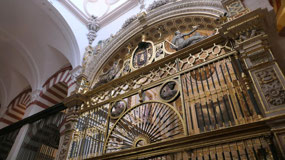
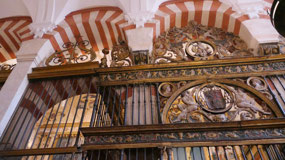

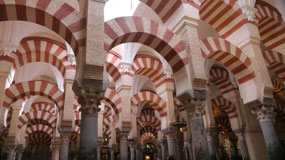
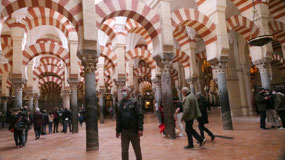
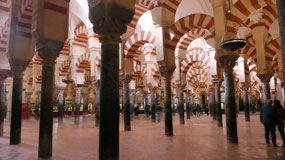
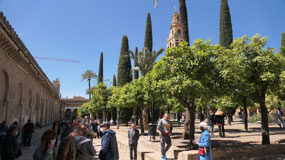
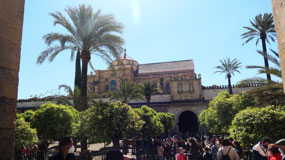
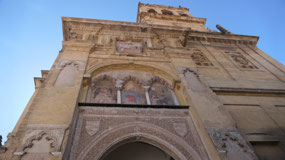
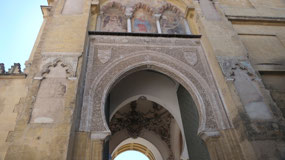
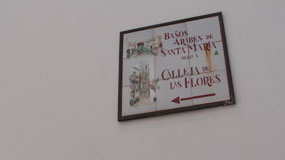
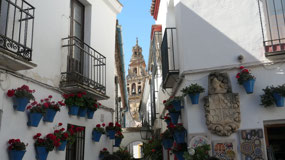
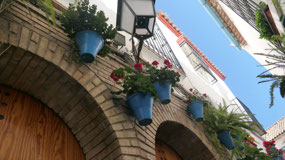
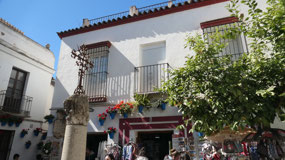
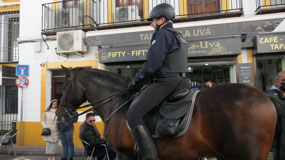
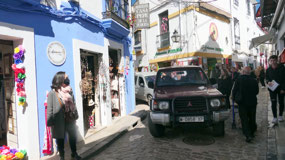
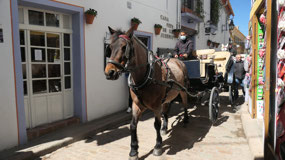
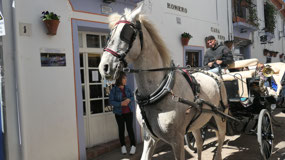
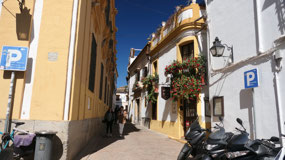
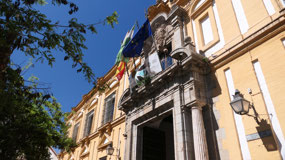
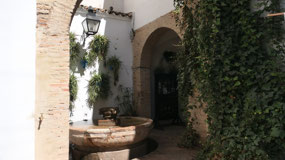

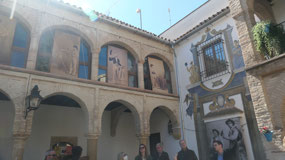
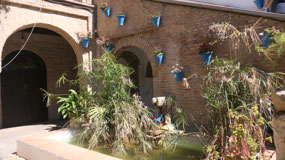
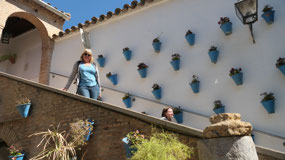
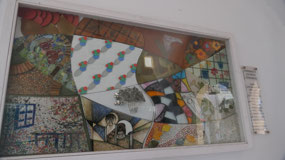
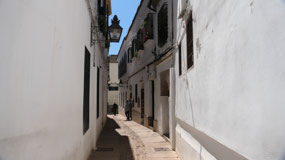
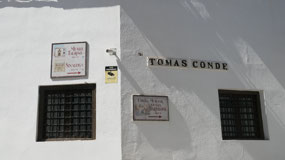
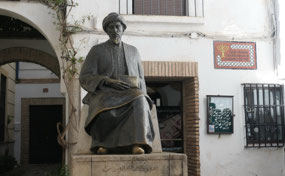
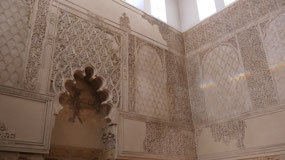
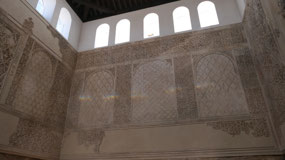
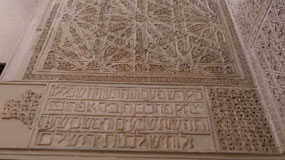
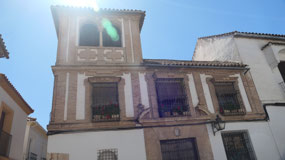
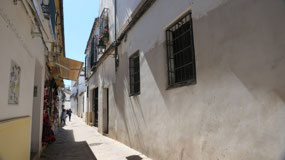
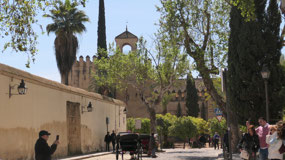

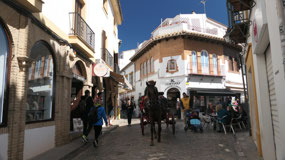
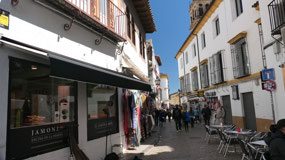
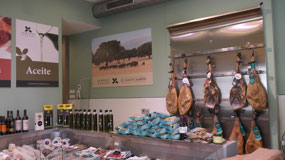
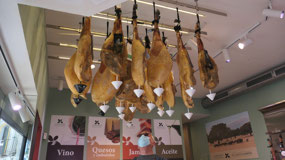
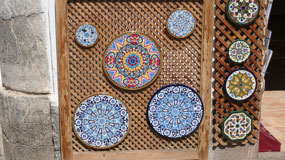
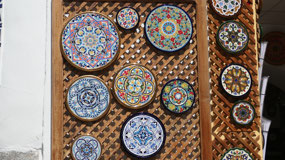
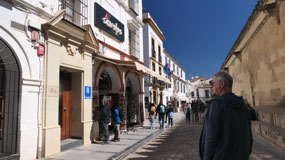
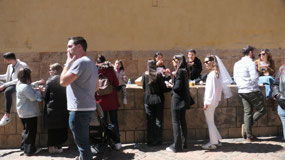
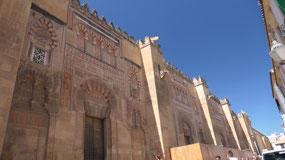
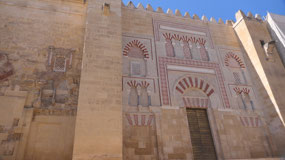
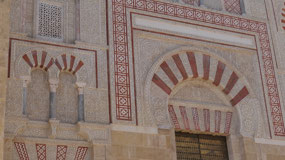
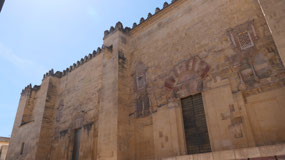
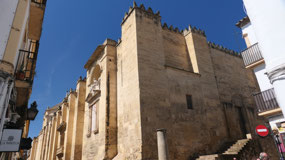
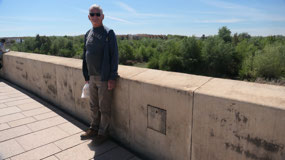
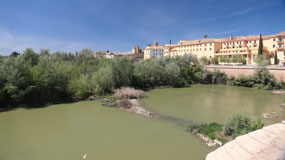
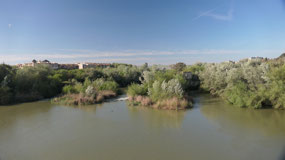
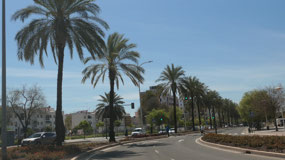
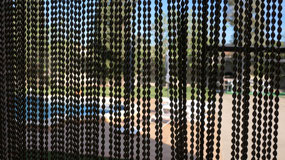
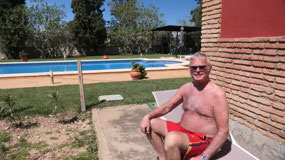
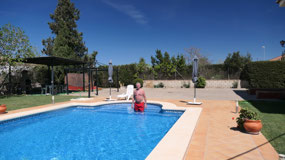
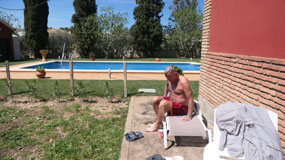
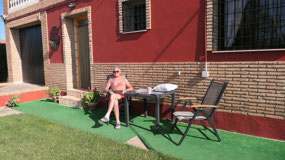
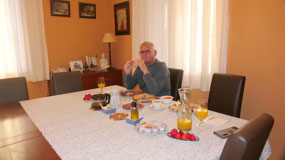
2025-05-22